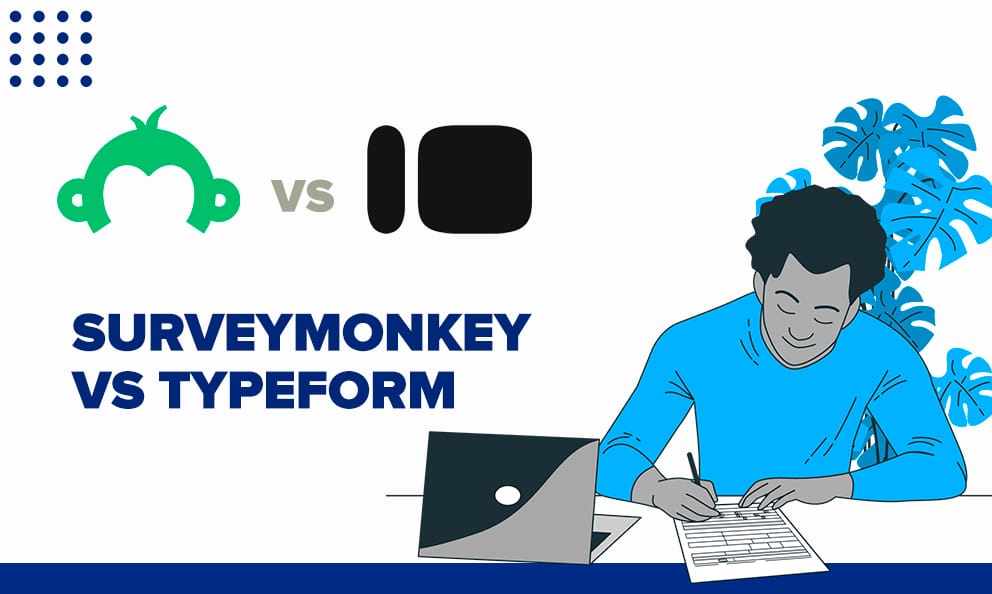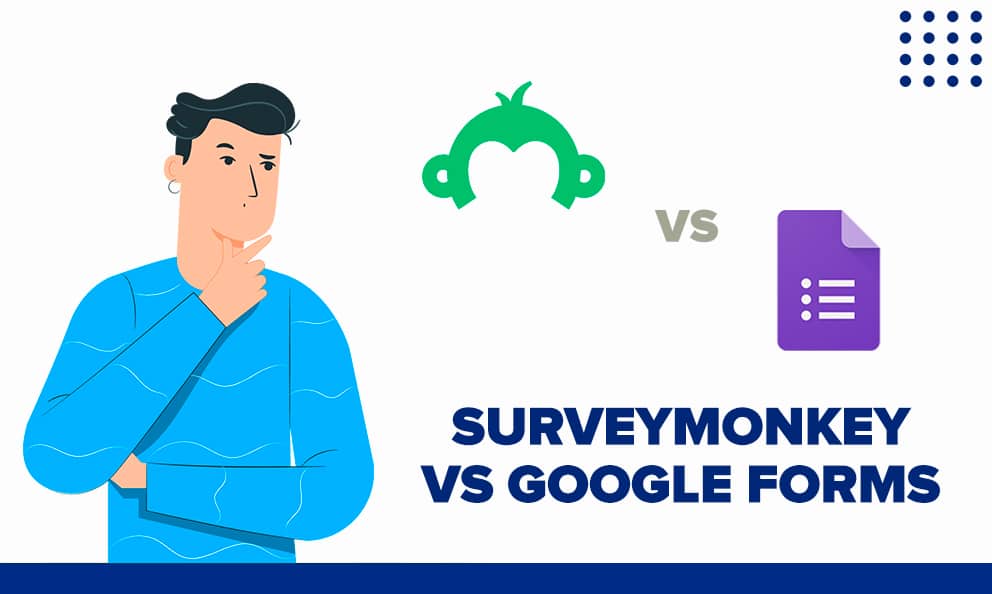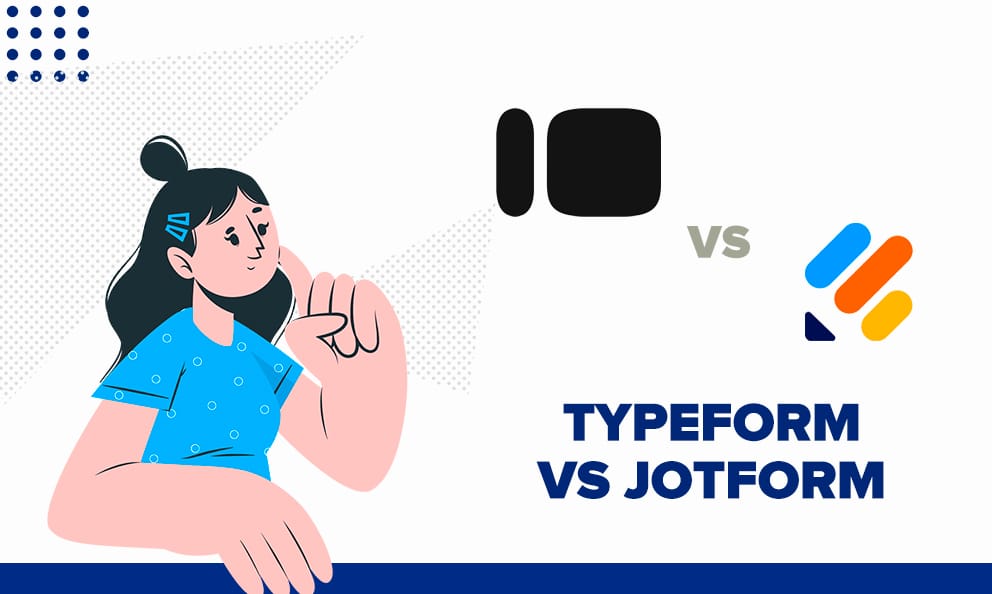
Employee motivation is a crucial aspect of any successful organization. It’s the driving force that propels employees towards achieving their goals, which in turn contributes to the organization’s overall success.
In this guide, we will discuss employee motivation, provide you with practical and effective strategies to enhance it, and help you achieve your team’s full potential.
What is employee motivation?
At the heart of employee performance lies motivation – the level of enthusiasm, energy, commitment, and creativity that an employee brings to their role daily.
The origin of the word “motivation” comes from the Latin word “movere,” meaning “to move.” Motivation is inherently linked to behavior, and to achieve desired goals and results, this behavior must be harnessed and channeled effectively. Motivation is a crucial driver of success in the workplace, and understanding how to cultivate and maintain it is key to achieving optimal performance.
LEARN ABOUT: Workforce Planning Model
Types of employee motivation
An organization needs to understand for a fact that not employees are clones. They are individuals with different traits. Thus, effectively motivating your employees will need to acquire a deeper understanding of the different types and ways of motivation.
Therefore, you will be able to categorize your employees better and apply the right type of motivation to increase the level of employee engagement and employee job satisfaction. Some employees respond better to intrinsic motivation, while others may respond better to extrinsic motivation.
Employee motivation is all about how engaged an employee feels in tandem with the organization’s goals and how empowered he/she feels. Motivation is of two types:
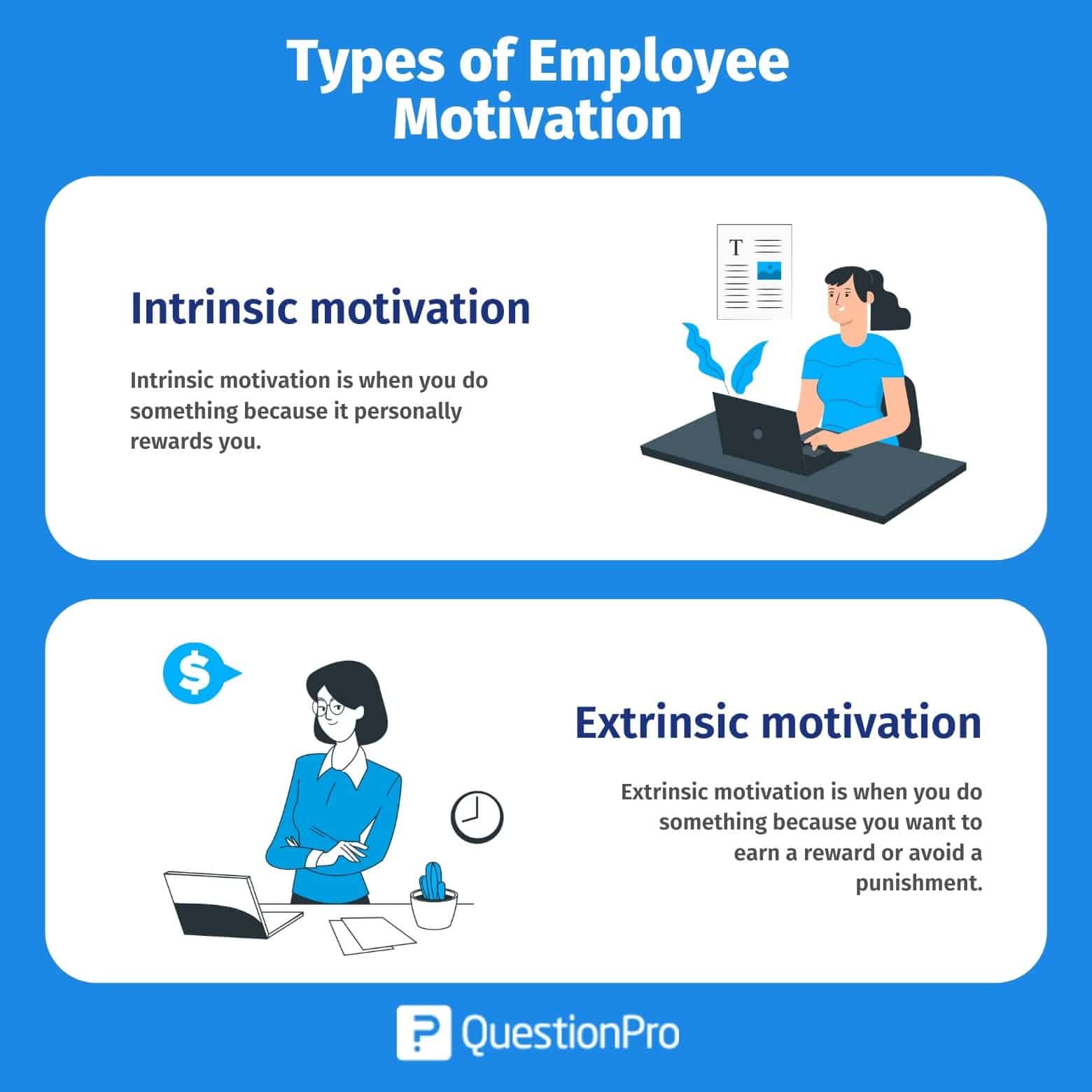
Intrinsic motivation
Intrinsic motivation means that an individual is motivated from within. He/she has the desire to perform well at the workplace because the results are in accordance with his/her belief system.
An individual’s deep-rooted beliefs are usually the strongest motivational factor. Such individuals show common qualities like acceptance, curiosity, honor, and desire to achieve success.
Research has shown that praise increases intrinsic motivation, and so does positive employee feedback. So if you are a manager, supervisor, or in a leadership role, please be intentional with your feedback or praise. Make sure it is empowering and that your employees understand your employee expectations.
Extrinsic motivation
Alternatively, extrinsic motivation means an individual’s motivation is stimulated by external factors- rewards and recognition. Therefore, some people may never be motivated internally, and only external motivation would work with them to get the tasks done.
Moreover, research says extrinsic rewards can sometimes promote the willingness of a person to learn a new skill set. Additionally, rewards like bonuses, perks, awards, etc., can motivate people or provide tangible feedback.
LEARN ABOUT: Employee Rewards Ideas for Employee Engagement
The importance of employee motivation
According to psychologists, self-realization is a very human thing. Moreover, it is our basic nature to nurture something and see it flourish. It is applicable to most things we do in our day-to-day life. Hence, this is true for both social and societal spaces.
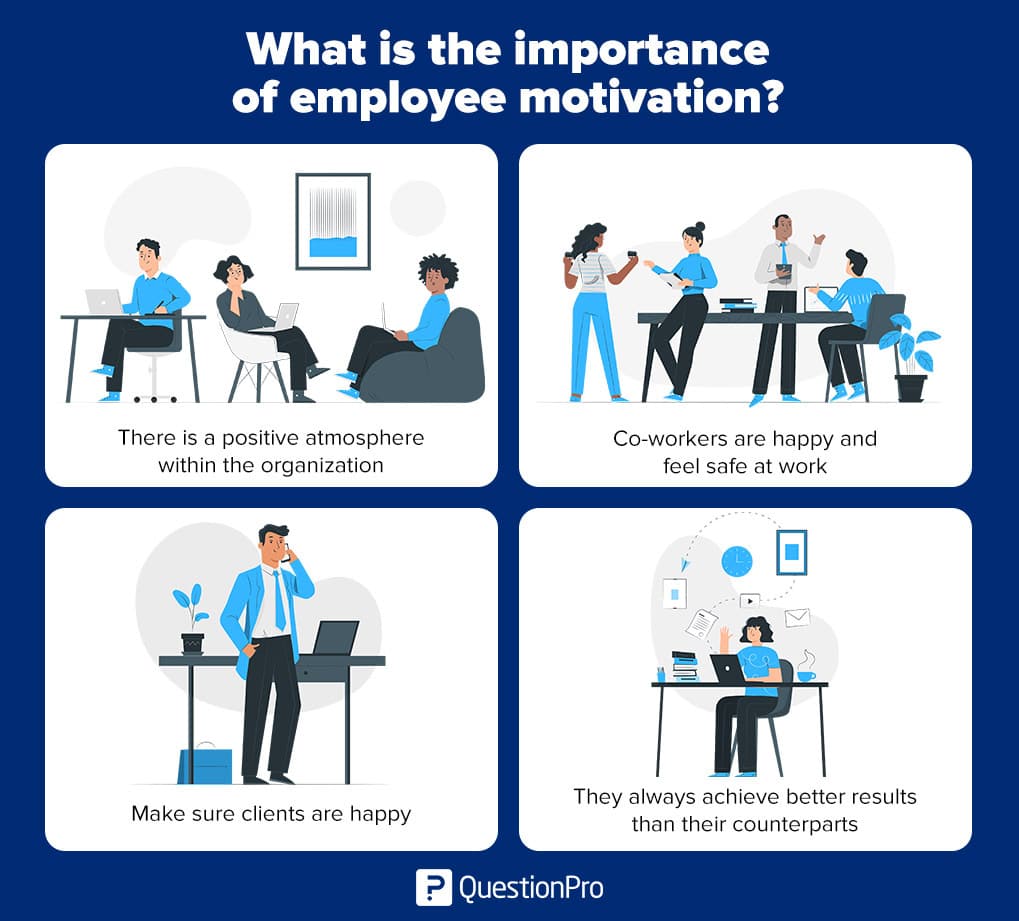
Undoubtedly, motivation plays a very important factor in a human’s life. Therefore, motivated employees take the initiative, are eager to take up additional responsibilities, and are innovative and go-getters.
Motivated employees ensure:
- There is a positive atmosphere within the organization
- Co-workers are happy and feel safe at work
- Make sure clients are happy
- They always achieve better results than their counterparts
Motivation, therefore, plays a very important factor and ensures employees remain active and contribute their best toward their organization. Furthermore, a high level of motivation leads to a lower level of employee turnover.
In the next section, you will learn about the 10 simple ways to motivate your employees. Forbes elaborates that another crucial factor for managers is to understand the difference between employee motivation and engagement. Making an effort to understand the difference will, again, lead to lower levels of turnover rates.
Top 10 ways to motivate employees
If you are looking for ways to motivate your employees at work, here are the five simple ways of making it work:
- Employee motivation surveys: Use an online survey software or platform to conduct employee motivation surveys.
- Employee satisfaction surveys: Employee satisfaction depends on a ton of factors such as work environment, infrastructure, roles, responsibilities, etc. Conducting employee satisfaction surveys will help Managers understand dissatisfaction factors and act on them.
- Recognization: Recognition helps create a healthy bond between the employer and employees.
- Focus on intrinsic rewards: Extrinsic rewards fade very quickly. Focus on motivating your employees from within.
- Autonomy, not bureaucracy: Micromanagement is the worst thing you can do as a manager. If you have hired people with certain skillset let them do their job, be a facilitator, not a dictator.
- Create an amazing work environment: Creating a good atmosphere will motivate your staff.
- Be a visionary: Lead with vision. Employees need to know their efforts are driving something important. They need to know their destination and, more importantly, the path that will take them there.
- Act on soliciting ideas and suggestions: Now that you have conducted surveys, you have received feedback from your employees. Ensure that the ideas, suggestions, and grievances that they have put forth will look into and addressed in a timely fashion.
- Career-pathing: Having a career growth plan with clearly mentioned roles and responsibilities is crucial to employees. Therefore, make sure that you sit down with every employee and come up with a career plan that is transparent and communicated clearly.
- Provide flexibility: Not all employees are alike. Therefore, you should allow some flexibility within reason, and your employees will be happy and motivated.
Herzberg’s employee motivation theory
Herzberg’s employee motivation theory, or two-factor theory, says there are two factors to which an organization can adjust to influence the levels of motivation at the workplace.
The two factors identified by Herzberg are:

- Motivating factors: The presence of motivating factors encourages employees to work harder. They are the factors found in the workplace.
- Hygiene factors: Hygiene factors, if not present, will discourage employees from doing their best at work. Thus, hygiene factors are the surrounding factors that facilitate employees’ behavior.
Here are some of the examples of motivators and hygiene factor
| Motivators | Hygiene Factors |
| Recognition | Security |
| Growth | Company policies |
| Achievements | Salary |
| The work itself | Work conditions |
| Responsibility | Manager/supervisor |
There are 4 statistics that are involved here:
- High hygiene & high motivation
It is an ideal situation any manager or supervisor would want to achieve. Here all the employees are happily motivated and have very few grievances. - High hygiene & low motivation
In this situation, employees have very few grievances but are also not highly motivated. A good example of this situation is that employees are paid well, but the work is not very interesting. Employees simply collect their pay cheques and leave. - Low hygiene and high motivation
Employees are highly motivated but also have numerous grievances, particularly when the work is extremely interesting, but the employees are not paid as per the market standard. - Low hygiene & low motivation
No point in guessing, it is obviously a pretty bad situation. Here neither the employees are motivated, nor the hygiene factors are in place.
How to use Herzberg’s theory in practice?
Herzberg’s motivation theory can be used to improve employee motivation in the workplace by identifying and addressing the factors that drive or detract from motivation. To implement the theory:
- Primarily rectify and change bureaucratic company policies. Thus, make sure your Human Resources is in line with what other organizations offer, and they know the leadership’s expectations. Therefore, keeping both in mind, drafting policies that are a win-win for everyone.
- In addition, ensure your managers are also mentors and not just bosses. Each employee should be respected and supported.
- Organizational culture plays a very crucial role here.
- Make sure the compensation, perks, and bonuses are as per the market standards. Hence, if you don’t compensate your employees well, why would they show interest in taking any initiatives?
- Employees will be satisfied and find their jobs meaningful if their jobs are constructed well.
- Delegate your employees’ responsibilities, and make them feel valued. Respect their individuality, listen to their feedback seriously, and particularly take action wherever necessary.
Conclusion
To attain optimal levels of employee motivation, organizations should invest in creating a supportive and encouraging work culture and providing employees with the necessary resources and support.
In the end, having motivated employees makes an organization more productive, efficient, and profitable. QuestionPro can help you in your employee motivation process.
QuestionPro is a survey and data analytics tool that can assist organizations in increasing employee engagement by offering insights into their employees’ opinions and attitudes. QuestionPro may assist organizations by conducting employee surveys and getting feedback.
Organizations can create a more engaged and productive workforce by constantly measuring and improving employee motivation. Learn more about how to get ongoing feedback from your employees and start taking action to make a positive impact in your organization with QuestionPro Workforce.





